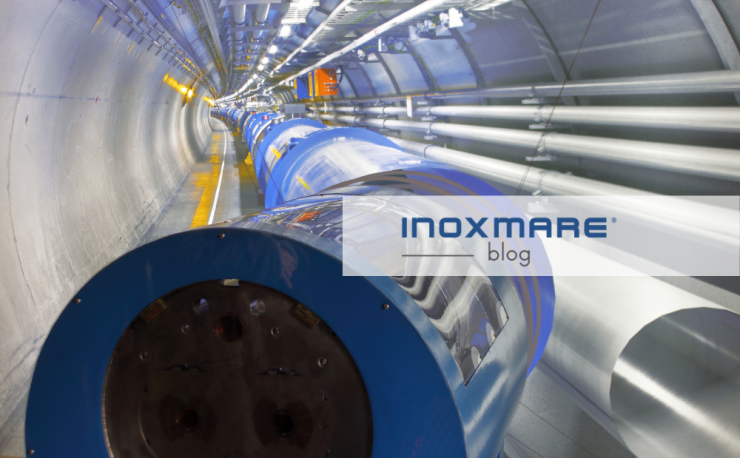
Today, we explore a fascinating and scientifically significant topic: the use of stainless steel in the CERN particle accelerators. CERN, the European Organization for Nuclear Research, established in Geneva in 1954, is renowned for its groundbreaking discoveries in particle physics and for the innovative engineering solutions that make these discoveries possible.
CERN Particle Accelerator: Why Choose Stainless Steel?
Stainless steel is a key material in the construction of particle accelerators. But why is it so important? Let’s delve into the main reasons:
CORROSION RESISTANCE
Particle accelerators operate under extremely demanding conditions, where corrosion resistance is essential. Stainless steel, thanks to its chemical composition, offers excellent corrosion resistance, ensuring the long-term durability of structures and components.
MECHANICAL PROPERTIES
Stainless steel combines mechanical strength and ductility, fundamental qualities for withstanding the extreme physical forces generated during accelerator operations. This combination of properties ensures that components can endure stresses without deforming or breaking.
More Reasons to Choose Stainless Steel.
PURITY AND STABILITY
For the proper functioning of particle accelerators, maintaining an extremely clean and contamination-free environment is crucial. Stainless steel is known for its purity and chemical stability, making it ideal for preventing contaminants that could interfere with experiments.
COMPATIBILITY WITH HIGH VACUUM
Particle accelerators often operate under high vacuum conditions to minimize the interaction of particles with the air. Stainless steel is particularly suitable for maintaining structural and functional integrity in these conditions, thanks to its low gas permeability.
THERMAL CONDUCTIVITY
Heat management is a critical aspect of particle accelerators. Stainless steel offers good thermal conductivity, allowing for effective dissipation of heat generated during operations and helping to maintain operating temperatures within desired limits.
Practical Applications of Stainless Steel at CERN.
At CERN, stainless steel is used in several key components of particle accelerators, such as:
- RF (Radio Frequency) Cavities: crucial for accelerating particles, these cavities are often made of stainless steel due to its conductive and structural properties.
- Vacuum Chambers: where particles are accelerated, benefiting from the corrosion resistance and low gas permeability of stainless steel.
- Cooling Systems for Deionized Water: parts in contact with the secondary water circuit are made of AISI 316 stainless steel (e.g., valves, assembly components).
- Superconducting Magnetic Shields: used for a prototype magnet for extracting beams of charged particles from the accelerator.
- Supports and Structures: the support structures of the accelerators are made of stainless steel to ensure stability and long-term durability.
Visit our website and discover how easy it is for companies to buy our stainless steel fasteners online.
Want to read more articles? Continue here.